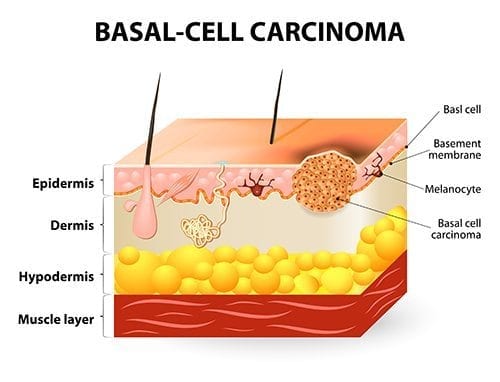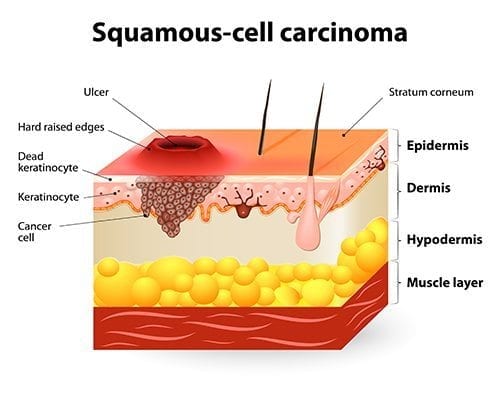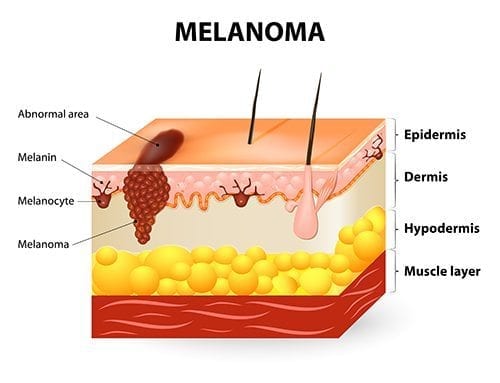Your skin is constantly subjected to the elements especially the sun which can cause cancer. Skin cancer is one of the most common forms of cancers in the world today. Left untreated or undetected, it can be fatal. At Marina Plastic Surgery, we have dealt with all forms of skin cancer and we have a very good success rate with our patients.
Overview
There are 3 major types of skin cancer. These are:
Basal Cell Carcinomas (BCCs)
Basal Cell Carcinoma is the most common form of skin cancer and is directly involved with too much sun exposure. 80% of Basal Cell Carcinoma occurs on the neck and head, areas directly exposed to the sun.

Basal Cell Carcinomas (BCCs)
Basal Cell Carcinoma is the most common form of skin cancer and is directly involved with too much sun exposure. 80% of Basal Cell Carcinoma occurs on the neck and head, areas directly exposed to the sun.

Malignant Melanoma
This is the most serious form of skin cancer due to its unpredictable nature and tendency to spread to other parts of the body.
This form of skin cancer is fatal if left untreated or detected too late.

You may also refer to this mnemonic to ascertain if you have any form of skin cancer, especially melanoma.
A = Area, has there been a change in size, suggesting that the lesion has grown, or Asymmetry since a malignant lesion is likely to be asymmetric;
B = Border irregularity;
C = Colour variegation (shades of red, blue, black and brown may be visible);
D = Diameter typically greater than 6mm;
E = Everything Else, including itching, bleeding, ulceration or feeling constantly aware of it.
Note: Only a licensed physician will be able to give a conclusive diagnosis as there are some changes in the skin that may not be cancerous in nature.
Best Candidates
Adults who are constantly exposed to the sun, have a genetic predisposition to develop skin cancer or are exposed to conditions that run the risk of developing symptoms of skin cancer.
Adults who have noticed a drastic change in their skin condition or suspect they may have skin cancer.
You may also refer to this mnemonic to ascertain if you have any form of skin cancer, especially melanoma..
A = Area, has there been a change in size, suggesting that the lesion has grown, or Asymmetry since a malignant lesion is likely to be asymmetric;
B = Border irregularity;
C = Colour variegation (shades of red, blue, black and brown may be visible);
D = Diameter typically greater than 6mm;
E = Everything Else, including itching, bleeding, ulceration or feeling constantly aware of it.
Note: Only a licensed physician will be able to give a conclusive diagnosis as there are some changes in the skin that may not be cancerous in nature.
What to Expect
An initial consultation will be done to assess what type of cancer you have with a secondary assessment done for a more conclusive diagnosis.
Treatment is highly dependent on the type of skin cancer you have. More severe cases may require non-invasive or mildly invasive surgery with positive results expected.
There are many methods used in treating cancer including but not limited to chemotherapy and surgical excision
After Surgery / Recovery
Ample bed rest, lessened exposure to the sun and a change in diet is normally advised to recovering patients. Care should be given to areas where skin was excised.
Procedure Planner
Initial Meeting
45 – 60 minutes
Pre-op
30 – 60 minutes
Procedure Time
2 – 6 depending on technique used
Recovery Time
2 – 8 weeks
Post-op Follow Up
1 week
